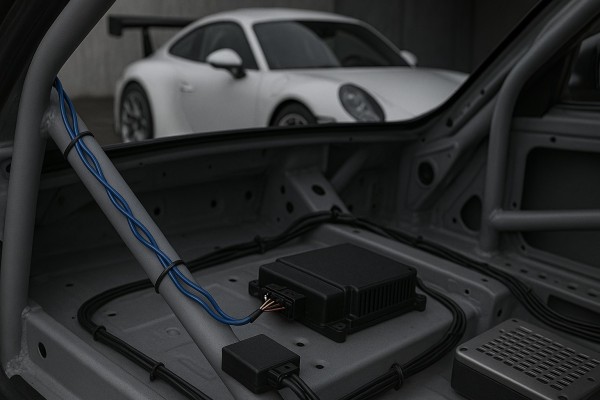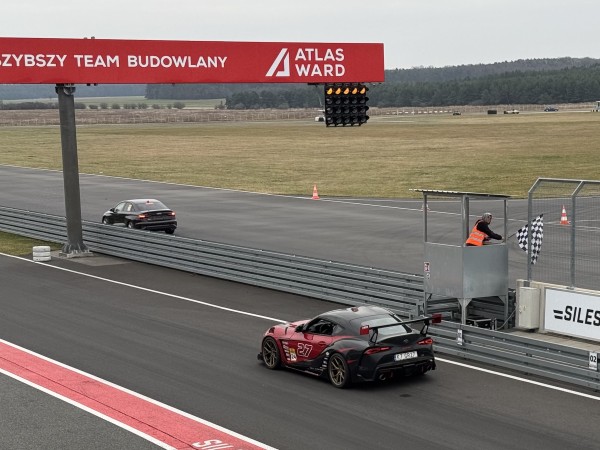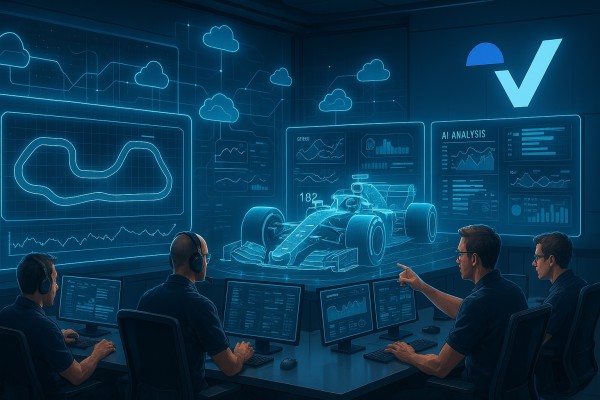Racing telemetry
6 Common Racing Mistakes That Can be Fatal - How to Fix them?
by Paweł Sobociński |

Racing at high speeds and pushing the limits is undeniably a racer's dream. However, nothing crushes that dream faster than making mistakes that could lead to dangerous, potentially fatal situations.
Many racing errors stem from a lack of awareness, racing analysis, or preparation. By understanding these pitfalls and knowing how to fix them, drivers can significantly reduce the risk of accidents. It’s crucial to stay informed about these issues and take proactive measures to address them.
Now the question arises: How can you ensure you’re prepared enough to avoid any of these mistakes? In this article, we will guide you through identifying and fixing the six most common racing mistakes that can be fatal. So, buckle up, and let’s get started!
4 Common Fatal Mistakes in F1 Racing
Mechanical Failures:
Unexpected mechanical issues, such as brake failures or suspension malfunctions, can lead to fatal accidents. For instance, during the 1994 San Marino Grand Prix, Ayrton Senna's fatal crash was resulted from a steering column failure.
Pit Stop Errors:
Mistakes during pit stops, such as improperly secured wheels or fuel mishaps, can bring undesirable consequences in F1 racing. In the 1994 German Grand Prix, driver Jos Verstappen's car was engulfed in flames due to a refueling accident, highlighting the dangers associated with pit stop errors.
Driver Misjudgments:
There have been many incidents where errors are made in judgment or decisions during race. Most of the time, these misjudgements include miscalculating overtaking maneuvers or braking points, which can result in high-speed collisions.This mistake was once made by Nigel Mansell in his premature celebration during the 1991 Canadian Grand Prix. Mansell’s mistake led to his car stalling, costing him the race and demonstrating how lapses in concentration can have serious impact.
Track Incidents Due to Oil or Debris
Debris or oil spills on the track can cause drivers to lose control, leading to accidents. The 1994 San Marino Grand Prix weekend was marred by multiple incidents, including the death of Roland Ratzenberger during qualifying due to a front wing failure, emphasizing the critical need for track safety and maintenance.
Team Strategy Errors

Strategic decisions regarding pit stops, tire choices, and race tactics are crucial. Errors in judgment, miscommunication, or miscalculation can cost valuable positions or even lead to race retirements. For example, during the 2015 Monaco Grand Prix, Mercedes mistakenly called in race leader Lewis Hamilton for a late pit stop. This mistake made Hamilton to lose the victory.
Environmental Factors
Changing weather conditions, track surface issues, or unexpected obstacles can catch drivers off guard, leading to mistakes. Adaptability and quick decision-making are essential to go through these challenges effectively. During the 2007 European Grand Prix at the Nürburgring, sudden rain caused multiple drivers to skid off the track, dramatically altering the race's outcome.
How to Avoid Fatal Racing Mistakes

1. Advanced Training
Drivers should always be equipped enough to undergo rigorous training programs. The training should include advanced simulators building various race scenarios.
This immersive practice sharpens decision-making skills, improves reaction times, and prepares drivers for unexpected situations on the track. By replicating the real scenarios, drivers can hone the reflexes needed to make split-second decisions during a race.
2. Rigorous Maintenance Protocols
Strict maintenance schedules and quality control measures should be ensured for all vehicle components to meet the highest standards. Regular inspections and proactive part replacements minimize the risk of mechanical failures during races.
In addition to scheduled maintenance, there has to be a constant focus on identifying wear and tear on critical components like the gearbox, suspension, and brakes.
3. Comprehensive Pre-Race Planning
Strategists analyze extensive data, including weather forecasts, track conditions, and competitor performance, to develop robust race plans. This thorough preparation enables teams to make informed decisions and adapt swiftly to dynamic race environments.
Pre-race planning goes beyond just reviewing previous performance, involving an in-depth racing analysis of the specific track conditions on race day. With this data in hand, race planners develop strategies to handle any curveballs that may come their way.
4. Real-Time Weather Monitoring
Weather conditions, including rain, temperature, and wind, can significantly affect vehicle handling, tire performance, racing telemetry and race tactics. Therefore, weather conditions should be monitored repeatedly to anticipate environmental changes.
The weather's real-time data allows for timely adjustments in strategy, such as tire selection and pit stop timing. It helps ensure optimal performance regardless of weather fluctuations.
5. Advanced Data Analytics
Data analytics is used to monitor car performance in real-time, enabling predictive maintenance and strategic decision-making. However, AI powered and advanced data-driven approaches will help in identifying potential issues before they become critical.
With sensors placed throughout the car, teams gather vast amounts of data during practice sessions and races including engine temperature, tire wear, fuel levels, and brake performance. This kind of data can also be analyzed through telemetry overlay to help detect patterns and identify early signs of wear or malfunction.
Support tools like Vetkuro, are designed to give you an edge in every aspect of your racing performance. It can help obtain telemetric data without any lag like vehicle speed, tire wear, fuel consumption, and engine performance.
6. Cross-Functional Team Collaboration
F1 teams rely on close coordination between engineers, strategists, pit crews, and drivers to achieve maximum performance. It should be ensured to analyze data to provide insights into car performance, while strategists adjust race tactics based on the race conditions and competitor behavior.
Meanwhile, pit crews ensure that tire changes, refueling, and repairs are executed flawlessly within seconds. By fostering a strong collaboration and clear communication, teams can avoid mistakes and operate with precision during high-pressure moments.
Wrapping Up
Racing mistakes can make or break your performance on the track, and even the smallest error can cost valuable seconds. Identifying and correcting these mistakes with real time and beforehand preperation inclusing racing analysis is crucial for any racer striving for success.
Whether you're a racer fine-tuning your skills or a team striving to stay ahead in a competitive environment, it's time to prioritize efficiency and precision. At Vetkuro, we specialize in providing comprehensive solutions to elevate your racing performance. Vetkuro’s mobile app and web platform offer precise lap timing, advanced data logging, and powerful performance analysis, all in one platform.




